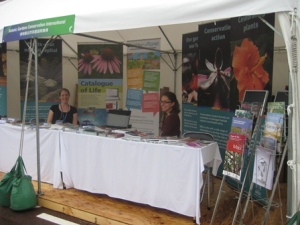Tuesday 2 November 2010
Dear Plants for the Planet supporter,
You were one of many people who pledged their support on the Plants for the Planet website for better plant conservation. Great news: a renewed and strengthened Global Strategy for Plant Conservation was adopted by the 193 Governments who met in Nagoya, Japan over the last two weeks (19 – 29 October 2010). Our voices were heard and acted upon; thank-you for taking part. This blog reports on that meeting (see below) and its decision.
Below, you can also see part of the adopted Global Strategy for Plant Conservation document, and the recognition it gives to plant conservation. The organisation behind Plants for the Planet is BGCI (Botanic Gardens Conservation International), and we are working with the botanical community around the world to support the successful implementation of the Strategy. Everyone can play a part and we will be making suggestions for how you can take action for plant conservation. The Strategy will be reviewed in 2015, and with your help we’ll be ensuring Governments keep to their promises.
Yours faithfully,
The Plants for the Planet Team (at Botanic Gardens Conservation International)
Part of the Global Strategy for Plant Conservation adopted by the intergovernmental meeting (COP10) in Nagoya, Japan on 29 October 2010:
UPDATED Global STRATEGY for Plant conservation 2011‑2020
…
A. Vision
Without plants, there is no life. The functioning of the planet, and our survival, depends upon plants. The Strategy seeks to halt the continuing loss of plant diversity.
1. Our vision is of a positive, sustainable future where human activities support the diversity of plant life (including the endurance of plant genetic diversity, survival of plant species and communities and their associated habitats and ecological associations), and where in turn the diversity of plants support and improve our livelihoods and well-being.
…
Above taken from The Global Strategy for Plant Consultation adopted at the Nagoya meeting (29 October).
Other related items from COP10
- Final press statement from the intergovernmental meeting (COP10)
- Video of the final press conference from the intergovernmental meeting (COP10)




